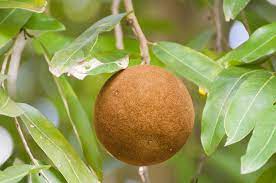Tuvaraka
BOTANICAL NAME: Hydnocarpus pentandra
FAMILY: Flacourtiaceae
CLASSICAL CLASSIFICATION:
Sushruta: Ubhayatobhagahara
ENGLISH NAME: Chaulmugra
COMMON NAME: Kaukapittha

HABITAT: The plant is found in the mountains of Western Ghats from Maharashtra to Kerela and is also found in the hilly regions of Assam and Tripura.
BOTANICAL DESCRIPTION:
Seeds are obtusely angular, elongate – obovate, dark brown, 8 to15 mm in width and 12 to 28 mm in length; Testa is longitudinally ridged and stony; cotyledons two, thin, papery; endosperm, abundant and oily; odor, indistinct; taste, acidic.
AYURVEDIC CHARACTERISTICS:
| RASA | GUNA | VEERYA | VIPAKA | PRABHAVA | DOSHGHNTA |
| Tikta, Madhura | Snigdha | Ushna | Katu | Rasayana, Kushtaghana, Krimighana | Vatahara, Kaphahara |
AYURVEDIC ENERGETICS:
| TASTE | PROPERTY | POTENCY | POST DIGESTIVE EFFECT | EFFECT ACTION | DOSHA ACTION |
| Bitter, sweet | Oily | Heating | Pungent | Rejuvenate, skin disorders, antihelmintic | Vata and kapha pacifying |
MAJOR CHEMICAL CONSTITUENTS: calcium oxalate
THERAPEUTIC USES:
- Netra roga: Pulp of Tuvaraka fruit, rock salt and srotonjana are made as coal by Antardhuma process first. Then the chaulmogar oil is mixed with it and applied as eye ointment in Pilla roga (Arma), Naktandhya (nyctalopia).
- Rasayana: Chaulmagor oil is used as Rasayana.
INDICATIONS:
Kustha Skin diseases, Jwara Pyrexia, Arsha Piles, Vrana Wounds
USEFUL PART: Seed
DOSAGE: (Powder): 1 to 3 g.
AYURVEDIC FORMULATION:
1. Tuvaraka Taila
2. Tuvarak Guna
3. Tuvaraka Taila Rasayana
4. Tuvaraka Taila
